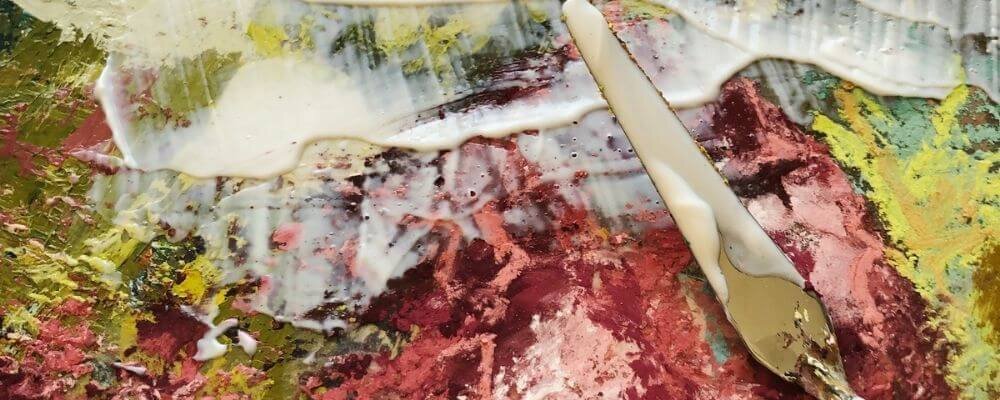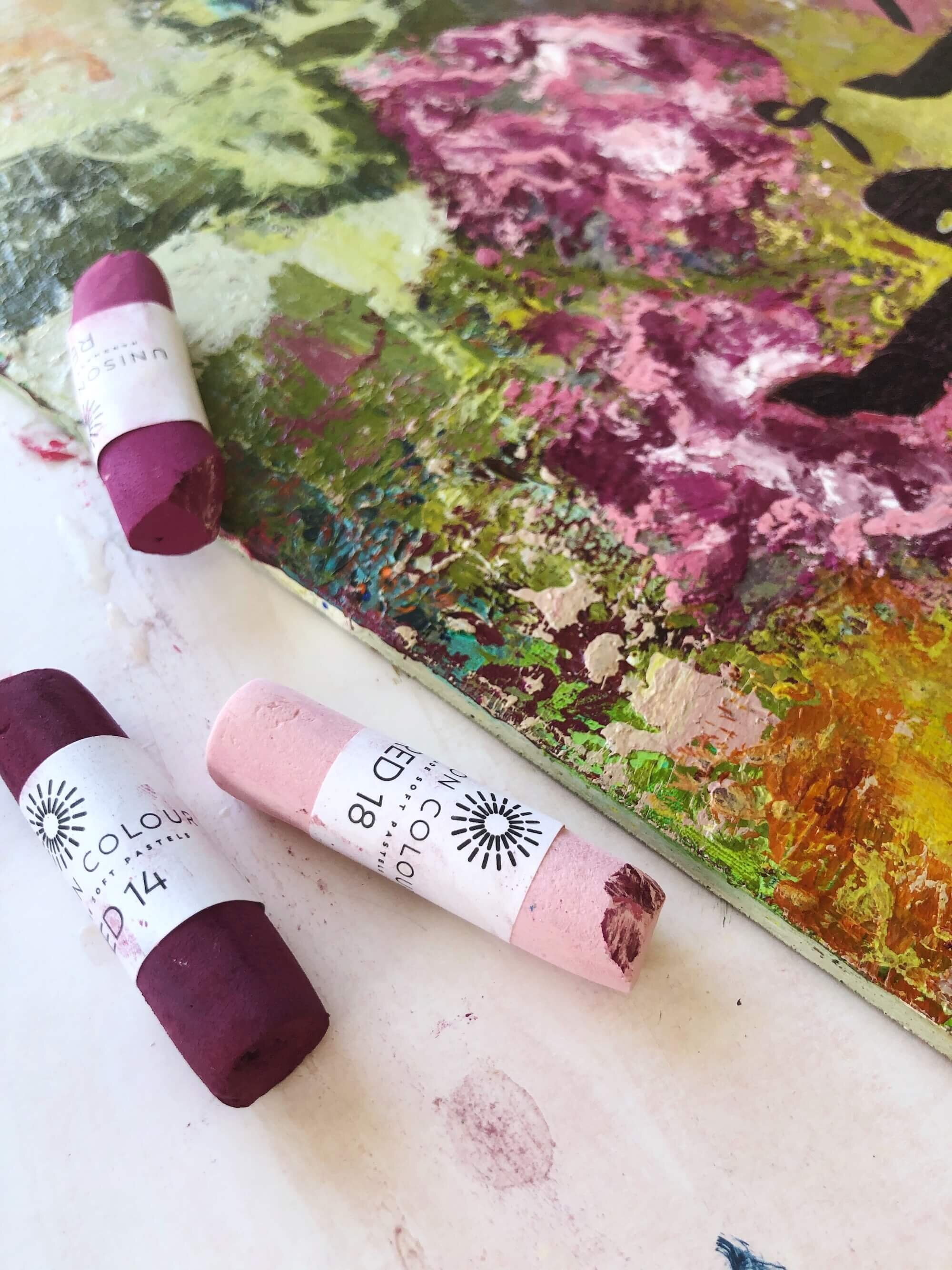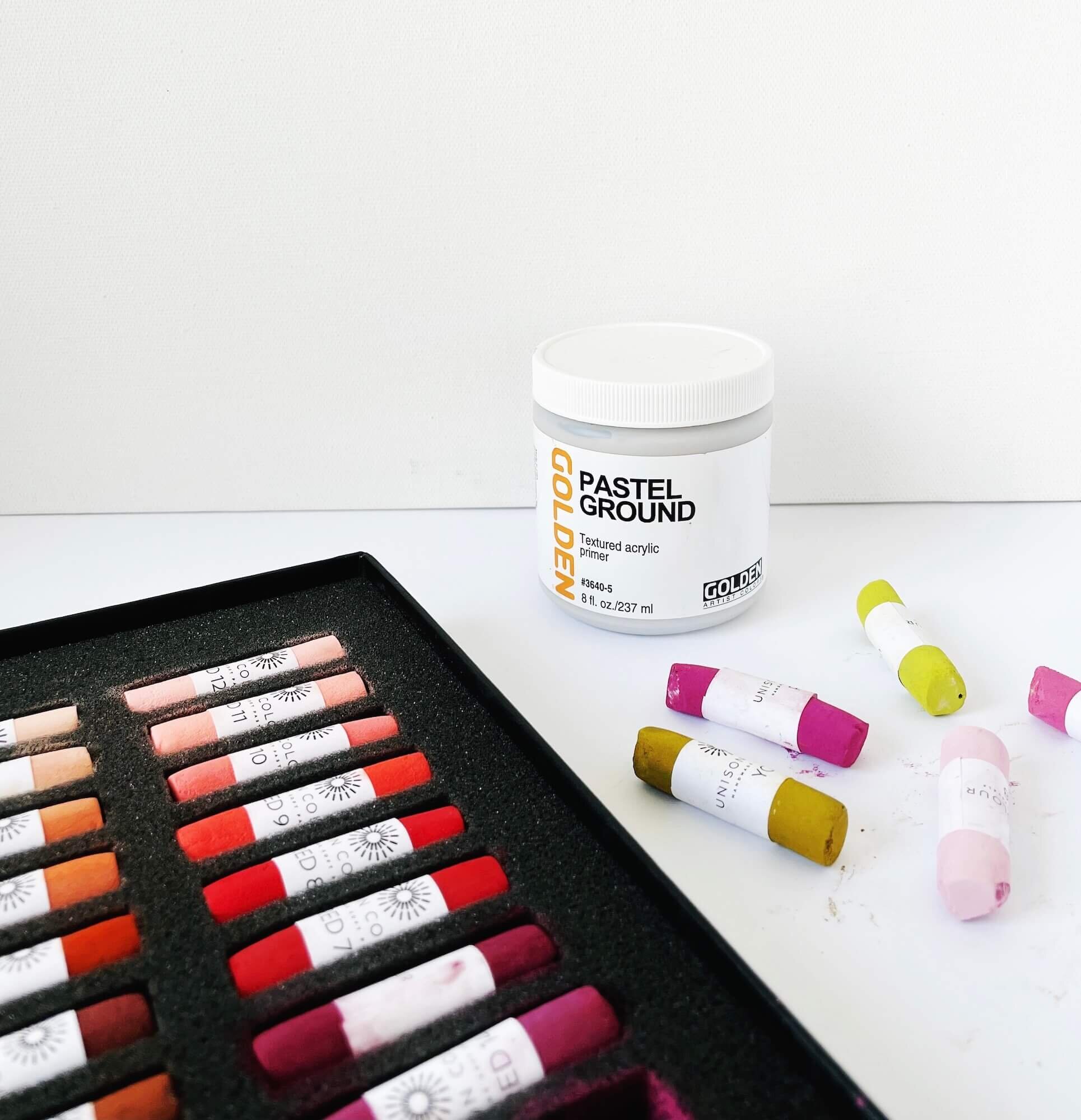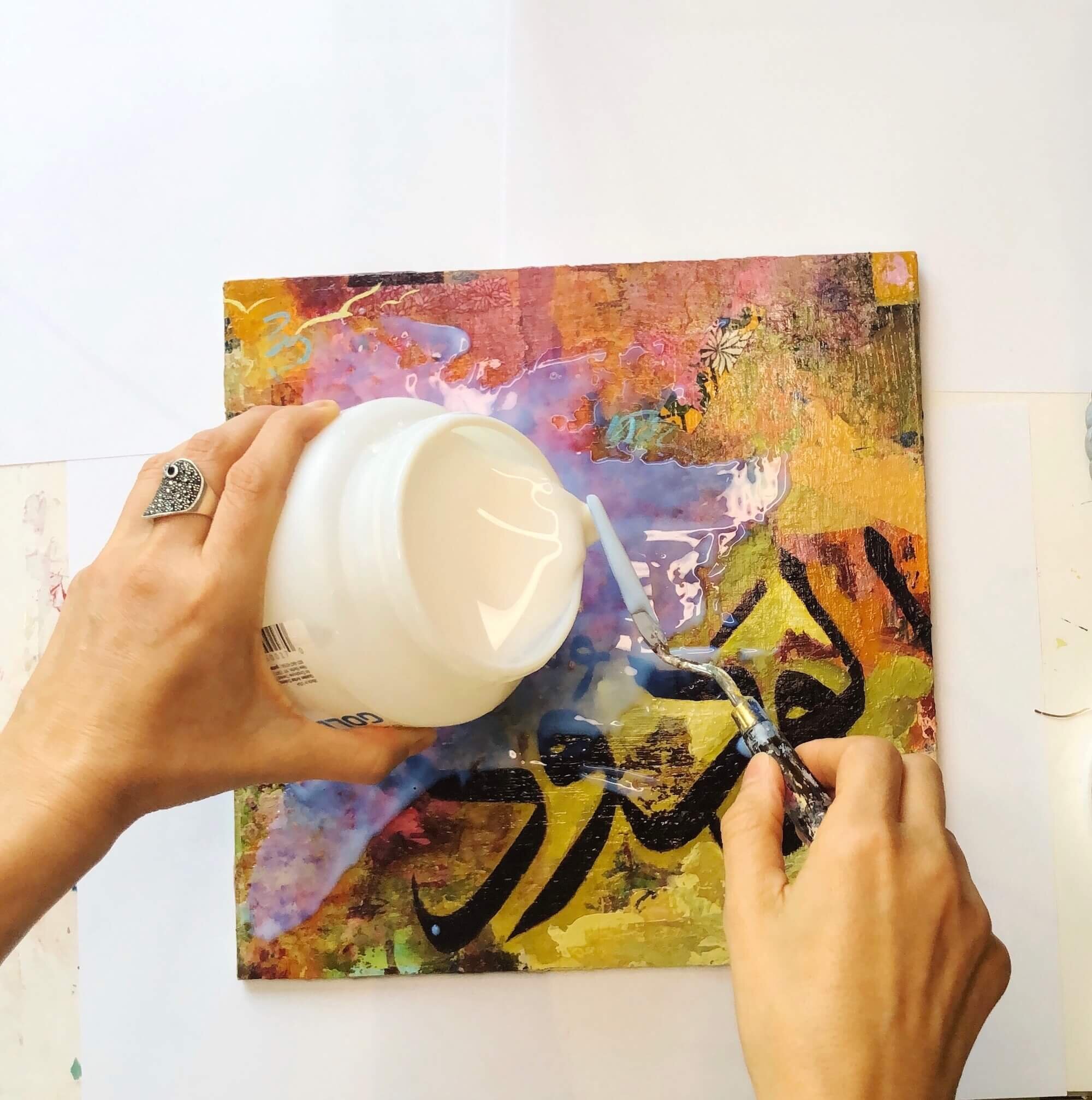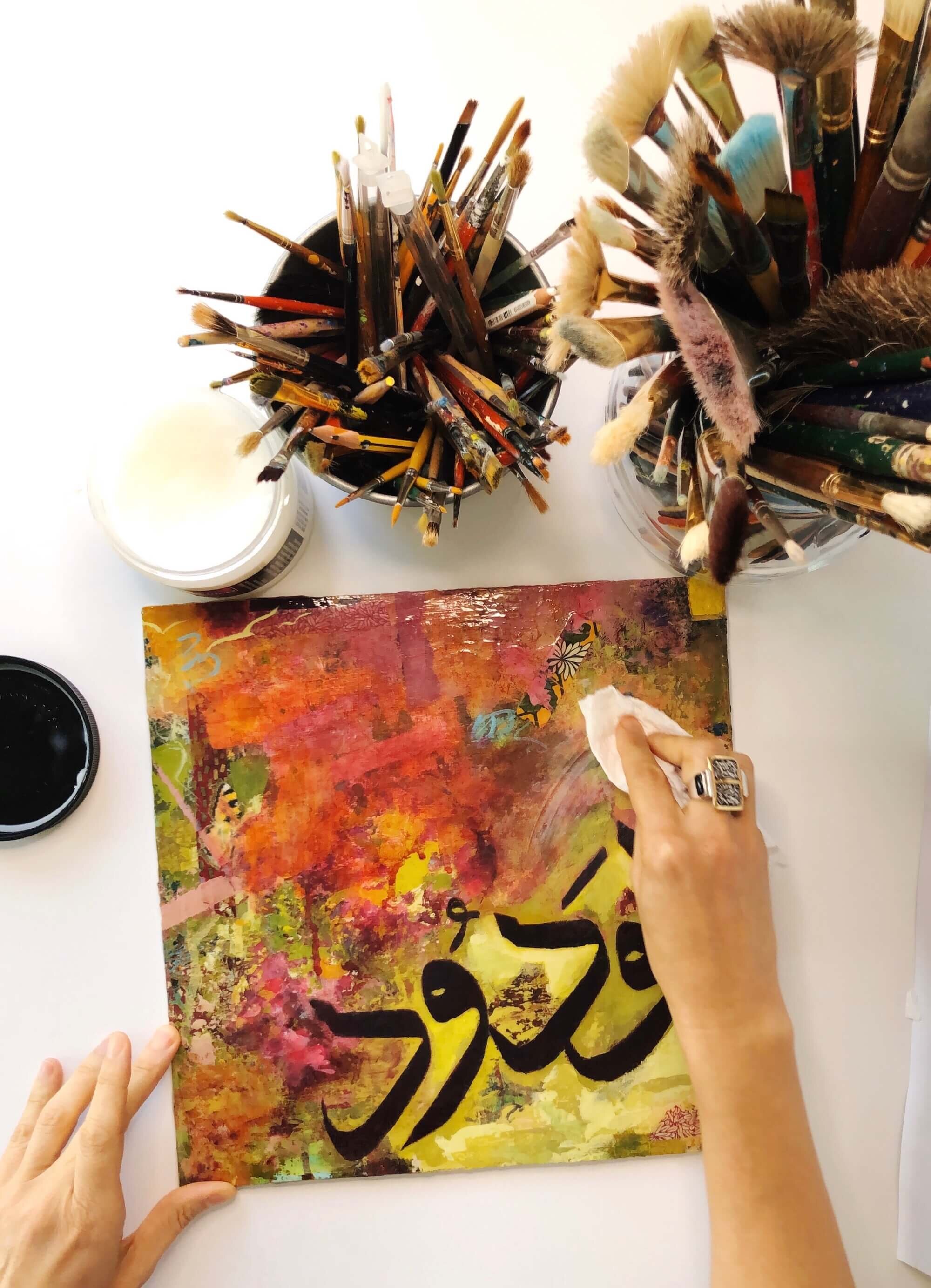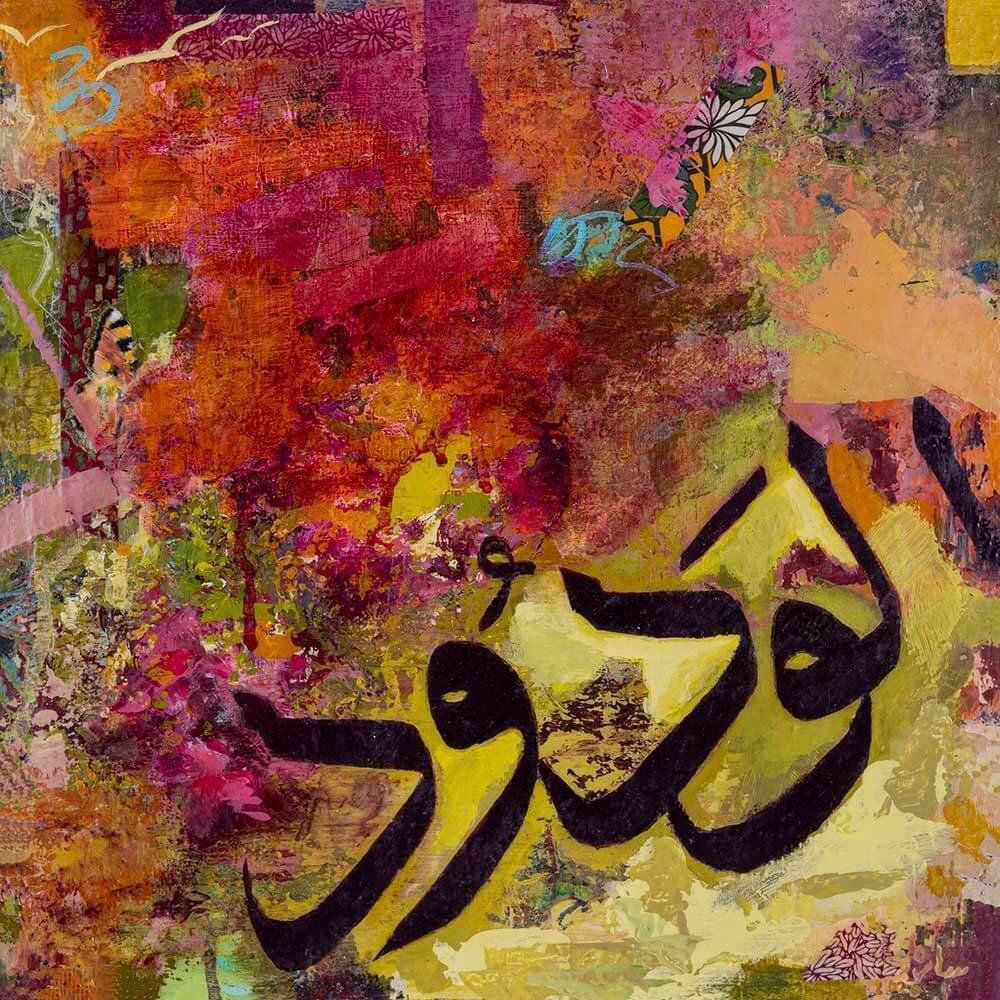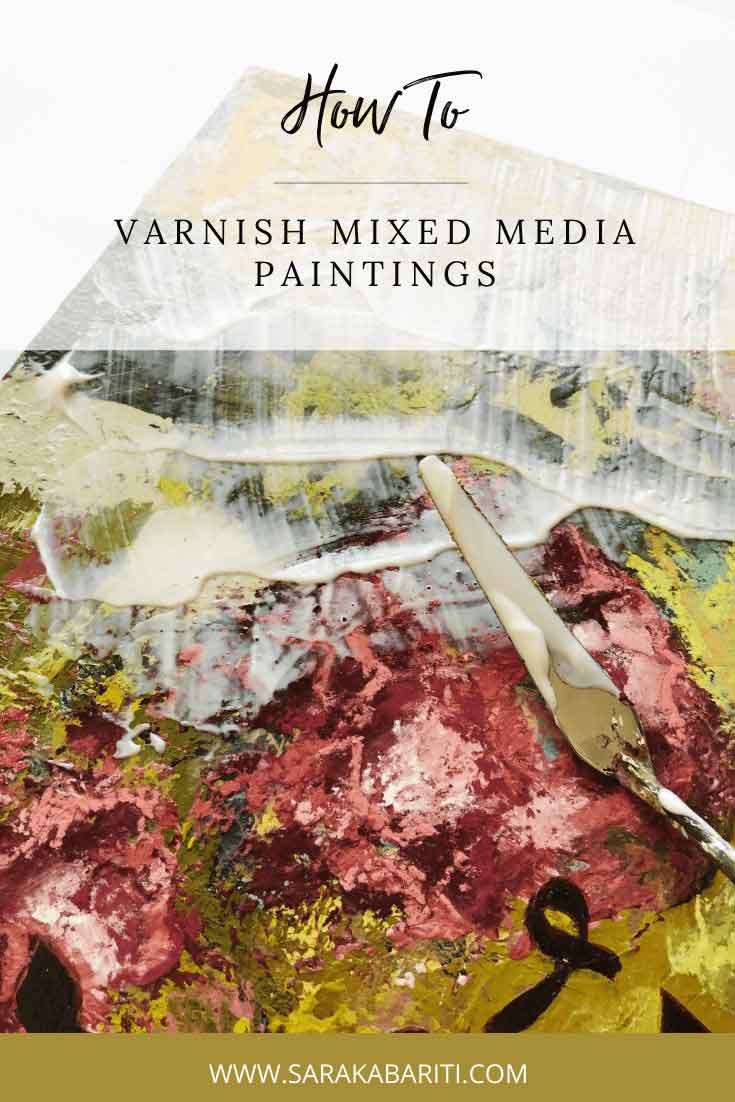How to Varnish Mixed Media Paintings
A step by step guide to finish your art.
Applying varnish to your artwork will protect it from dust, cracking and yellowing.
I’m in the process of bringing 15 paintings to conclusion. I started this series of abstract mixed media art back in March, coinciding with the Covid-19 lockdown. Many of my panels are nearly ready so I thought I’d share the final part of my painting process with you. Learn how to apply pastel fixative, gel mediums and varnish to your acrylic collage paintings and finish off with a wax coating to add depth and a wonderful eggshell lustre to your art.
I also have a very special guest I’d love to introduce you to. Meet Moh’d Bilbeisi the visionary architect, illustrator and watercolour artist. Scroll down for the full interview!
I’ve spent a good part of this year working on square hardwood panels 30 x 30 cm (12” x 12”) in size and I must say I prefer this surface option to canvas. The panels lend themselves beautifully to mixed media art. You can apply layers of paint, collage papers and ephemera then come back and scratch through the paint or sandpaper down parts of your painting, all without worrying about ripping your substrate.
Step 1 - Use Soft Pastels
I was inspired to finally use a big box of soft pastels that has been lying around in my studio for the last year unopened. The vibrant colours were just what I needed for the painting I was working on (photos below). I thought, “Why not?”
I just love my set of Unison Colour Soft Pastels. The pastels are highly pigmented and blend exceptionally well - wet or dry. This is ideal if like me, you love using acrylic paint.
Step 2 - Apply Some Pastel Ground
Luckily, I found a tub of pastel ground, which I had purchased and also forgotten about. Buying art supplies, I admit, is my weak spot! On a mission to start using what art supplies I actually have in my studio, I gave it a try and I love what emerged!
The pastel ground I used prepares the painting surface for pastel or even charcoal application as it creates a coarse tooth. I applied a thin layer with a palette knife to the areas I wanted to highlight with my pastels, but you can also use a squeegee, brush or a roller to cover your desired surface area. Make sure it dries properly before applying the soft pastels.
Step 3 - Spray on Some Pastel Fixative
The next step is to fix the soft pastel marks in place. I used Conté à Paris Charcoal & Pastel Fixative. Make sure you use this product outdoors and protect your eyes while applying it. Spray an even layer over your pastel marks and allow it to dry properly.
Step 4 - Add a Layer of Soft Gel Medium
I then added a layer of soft gel medium to my panel. Golden Soft Gel (Gloss) is my number one choice. I use this as a protective coat for my colours before applying varnish. It’s also a wonderful collage medium as its soft consistency fills any gaps present on your textured painting surface and seals collage papers and any marks - in this case made with pastels - firmly in place. You can even use it to create a glaze. Simply add a small amount of paint, mix it throughly and apply a thin layer over the area you want to glaze.
As this soft gel dries transparent, light will travel through it and reflect off the textured opaque painted surface below, adding depth and richness to your art.
Step 5 - Try Using Clear Leveling Gel
When I feel the painting is complete, I like to apply a layer of clear leveling gel. I love using Golden Clear Leveling Gel. As its name suggests, this medium becomes transparent when dry and levels out over the painting surface. This gives the viewer an added sense of depth as the light bounces off the textured uneven surface below. While this product is not intended as a topcoat, it is water, ultraviolet and chemical resistant. Once dry, the surface of your painting will have a very glossy finish, which you may be delighted with or not. At this stage, I prefer to leave my painting to dry overnight.
Step 6 - Add Gloss Varnish
The painting is now ready for varnishing. To date, I’ve been using M. Graham & Co. Gloss Medium & Varnish, which I’m quite happy with. It’s easy to apply with a foam brush. This varnish will protect your acrylic painting from cracking and yellowing. It may also be used as a medium for glazing as it increases flow, transparency and gloss of your paints.
Once I apply a thin even layer over my paintings, I typically place them on a level surface where they can dry undisturbed overnight.
Step 7 - Finish Your Painting with Wax Medium
The Golden Clear Leveling Gel gives your painting a highly glossy effect. If you’re happy with that then the varnish mentioned above would be your final coat. However, it feels a bit too artificial and plastic-looking for my taste. So while I love the sense of depth it adds to my painting, I like to finish off my paintings with a layer of wax medium.
Dorland’s Wax Medium is my number one choice. Made from pure beeswax and resin, this wax is translucent and non-yellowing. It works wonderfully with mixed media art and is of course a great choice if you prefer oil painting. I’ve used it as a protective coating for my series on wood panel and love the rich eggshell sheen it imparts.
You can use it as a varnish on top the Golden Clear Leveling Gel. Using a paper towel, take a small amount and wipe it all over your panel. You can buff it to create a gloss finish. Once dry, it acts as a protecting varnish that will seal out moisture, air and dirt.
And voilà! This painting is part of my new Hu Art Collection. Click below to explore the artwork..
I hope that was helpful! I’ve added links to the products I love to use below. Let me know how you get on with your artwork or if you have any questions feel free to email me.
Sara xo
Quote of the month
"If you ask me what I came to do in this world, I, an artist, will answer you: I am here to live out loud."
(Émile Zola)
I'm honoured to introduce you to Moh'd Bilbeisi, an imaginative professor, visionary architect, illustrator, and watercolorist, who is driven by an incredible passion for self-expression through art and illustration. He is an award-winning educator and illustrator. His students have won numerous national and international architectural design competitions under his direction in the design studio. He is also the recipient of many national and international awards in drawing and illustration the most noted of which is the Ken Roberts Architectural Delineation Competition, the American Society of Architectural Illustrators’ International Competition, and the Design Communication Association William Kirby Lockard Award. Professor Bilbeisi’s work is noted for its hidden meaning, unique dynamism, elegance, and masterful technique. Moh'd has developed an innovative loose style that blends perceived precision with loose abstract expressionism. His use of vibrant watercolor pigments and expressive brush strokes distinguish his paintings and illustrations. He has had solo exhibitions in the US, Turkey, and the UAE. His work is highly collected by individuals, nationally and internationally. In addition, governments, corporations and other entities such as Ducati USA, BMW, SKFGroup, Oklahoma State University, Emirates Air, and Hilton Intl. have utilized Moh'd's talents for graphic illustrations and ads. Moh’d is an avid traveler and his passion for travel and cultural multiplicity had taken him to places, near and far. He is often carrying his graphic journal documenting his experiences. He offers painting and sketching workshops nationally and internationally emphasizing the importance of graphic journaling, sketching and painting. Moh’d is also a noted author of several books such as Graphic Journaling and co-author of Words and Colors among others. His illustrations have appeared in numerous publications, books, and journal ads.
How did your journey with art begin?
As far as I can remember I was drawn to art and illustration by nature in a very powerful way. I doodled and still doodle all the time and it’s amazing how much this habit improves one’s skill and technique. I had very little art education and lived my childhood in a society that does not value art or artists.
What inspires your art?
Inspiration is a red herring! Everything around us inspires us. We just need to look and feel… open up to receive. Certain environments offer more than other in terms of inspiration and stimulus and with the ease of access to information, I’m afraid that today’s artists suffer from too much inspiration and stimulation which might lead to some negative results.
Why did you choose pen and watercolour as your chosen medium?
That’s a good question. Ink is usually permanent and forces the user to redo the work if the results are not what is expected. I use graphite too, but ink and fountain pens are my favorite due to the expressive nature of the nib. As for watercolors [American spelling] they’re so hard to master and have a mind of their own. Doing a watercolor painting is 30% skill and the rest is up to the pigment, water, brush, paper, relative humidity, wind, sun… and it’s hard to correct. Mistakes are fatal in watercolor painting which used to make me nervous… as I got older, I became better and taught myself to approach watercolor painting with a spiritual disposition. Hard to explain…do my best and let the pieces fall where they fall.
I'm intrigued by a number of paintings you've done recently of ancient sites such as the city of Damat Aljandal in Arabia Petrea as well as the Prophet Abraham and his wife Sarah. What inspired these paintings?
That’s a good question too, I’ve lived my childhood within a society that favors the word versus the image. All the stories were orally transmitted or through the written word. No images whatsoever! I used to read and listen to all these wonderful stories that should have been illustrated but they were not. I guess what I am doing is illustrating my own personal history. I do draw and paint my personal life but I keep those paintings private.
Why is art important in your mind?
It is the most sophisticated method to communicate thoughts, feelings, and ideas at the same time. It is therapeutic for the artist and the viewer. It’s such a disappointment that certain cultures frown upon the artistic expression of its citizens due to faulty ideology. That’s a lengthy discussion in itself.
What words of inspiration and encouragement can you share for those who want to explore their creativity?
Never be afraid to experiment and to not focus on technique…technique will come by itself, it takes time to master. Focus on the experience, the subject not the object. Lastly, avoid the so called style…again, it will happen organically by itself. I insist that aspiring artists should apprentice. That’s an amazing way to learn and mature. I’ve had the pleasure of working with the late Charles Reid and Shoning lee. I took a lot by working with them.
Anything else you'd like to add?
Thank you so much for all that you do. I love your work, it’s a breath of fresh air. Thank you so much.
New Painting
Love in Rose - framed mixed media on wood panel (32.5 x 32.5 x 4.5 cm)

